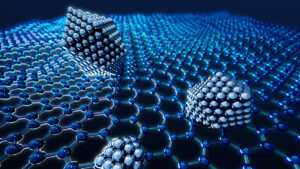Razafy grades excite as drilling carries BlackEarth towards graphite resource upgrade in Madagascar

Pic: Tyler Stableford / Stone via Getty Images
Grade may not be everything, but high grades like those seen by graphite company BlackEarth Minerals at its Razafy Northwest prospect in Madagascar are sure to be a fillip in its development plans for the Maniry graphite project.
Typical economic graphite deposits in Madagascar run at grades of between 5% and 7% total graphitic carbon.
The grades BlackEarth (ASX:BEM) is seeing in drilling at Razafy Northwest, around 600m as the crow flies from its Razafy deposit, blow that out of the water.
The company said previously reported intersections from the high grade discovery have now been extended, including:
- 32.7m at 16.3% TGC (from 5m) including 15.3m at 25.2%TGC
- 39.9m at 9.4% TGC (from 3m) including 16.0m at 14.12%TGC
- 38.2m at 11.9% TGC (from surface), and;
- 25.8m at 12.9%TGC (from 17m).
The rest of the assay results from the current campaign are due to be received and reported in early October.
“These latest results demonstrate the enormous potential value that exists in the northwest area,” BlackEarth managing director Tom Revy said.
“The increased widths, continuity of high grade and metallurgical results show that the Maniry deposit (which includes the Razafy and Razafy NW areas) is comparable to the best projects in the world.”
Grade moves the dial at Maniry
One of the important aspects of BlackEarth’s Maniry project, where a DFS is due next year, is the impact grade has on its headline numbers.
BlackEarth boasts a resource across the Razafy and Haja of 20.2Mt at 6.51% total graphitic carbon for 1.316Mt of contained graphite.
About 8Mt at 7.2% graphite are in the higher indicated category with the rest inferred.
A January 2019 scoping study outlined a capital cost of US$41m for its first 500,000tpa stage, delivering an NPV of US$103m before tax with an internal rate of return of 42%, generating ~30,000tpa of graphite at an opex of US$593/t FOB.
That is estimated at a feed grade of 6.2%. Should Maniry deliver feed grades averaging 7.2%, that NPV rises to US$152m with an IRR of 55%.
At 8.2% TGC those numbers climb to US$201m and 68%, for 9.2% US$250m and 81% and by adding 4% to the feed grade to take it to 10.2%, the NPV becomes $299m with a very compelling IRR of 94%.
“Given the project’s sensitivity to feed grade, the results attained to date from the Razafy Northwest area have the potential to significantly enhance our total project economics,” Revy said.
Also promising are results from preliminary metallurgical test work at the ALS lab in Perth.
Based on six diamond drill samples from Razafy Northwest ranging from 3.64% to 20.82% TGC, initial flotation tests achieved a high grade concentrate 98.4%TGC with recoveries generally above 90%.
An updated mineral resource incorporating the drilling at Razafy Northwest is due to be released in the fourth quarter.
This article was developed in collaboration with BlackEarth Minerals, a Stockhead advertiser at the time of publishing.
This article does not constitute financial product advice. You should consider obtaining independent advice before making any financial decisions.
Related Topics

UNLOCK INSIGHTS
Discover the untold stories of emerging ASX stocks.
Daily news and expert analysis, it's free to subscribe.
By proceeding, you confirm you understand that we handle personal information in accordance with our Privacy Policy.








